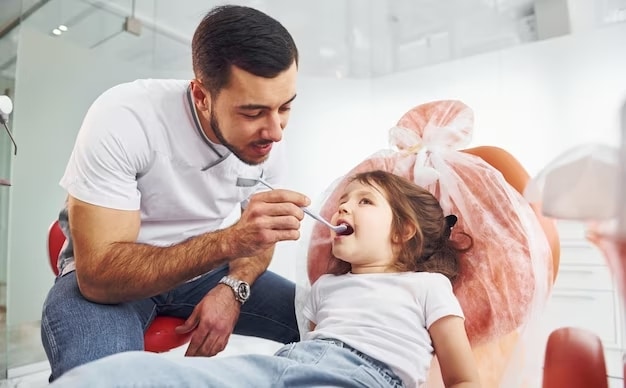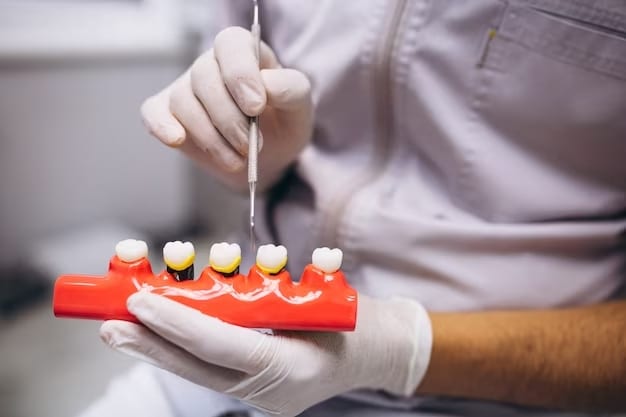Pediatric Dental Crowns: When Your Child Needs a “Cap” on their Tooth

As parents, we want nothing but the best for our children, especially when it comes to their health. Dental care is a crucial aspect of a child’s overall well-being, and sometimes, it may require more than just regular cleanings and fillings. One dental procedure that parents often have questions about is pediatric dental crowns. Often referred to as “caps” for their resemblance to a tiny crown, these dental devices are vital in ensuring your child’s dental health. In this blog, we will explore the world of pediatric dental crowns, when they are needed, what to expect during the procedure, and why they are a valuable solution for preserving your child’s smile.
What Are Pediatric Dental Crowns?
Pediatric dental crowns, or dental caps, are custom-made coverings placed over a damaged or decayed tooth. These crowns serve as protective shields, restoring the tooth’s strength, function, and appearance. Unlike the traditional idea of a crown as a shiny, metallic hat for a tooth, pediatric dental crowns come in various materials, some of which look almost identical to natural teeth.
When Does Your Child Need a Dental Crown?
1. Severe tooth decay
One of the most common reasons for pediatric dental crowns in Allen, TX, is severe tooth decay. When a child’s tooth is significantly decayed to the point where a traditional filling won’t suffice, a dental crown is often recommended. Crowns provide additional strength and protection to the damaged tooth, preventing further decay and preserving its function. One of the most common reasons for pediatric dental crowns in Allen, TX, is severe tooth decay. When a child’s tooth is significantly decayed to the point where a traditional filling won’t suffice, a dental crown is often recommended. Crowns provide additional strength and protection to the damaged tooth, preventing further decay and preserving its function.
2. Protecting weak teeth
Sometimes, children may have teeth that are naturally weak or structurally compromised due to developmental issues or accidents. In such cases, dental crowns can reinforce and strengthen these vulnerable teeth, preventing fractures and preserving their functionality. Sometimes, children may have teeth that are naturally weak or structurally compromised due to developmental issues or accidents. In such cases, dental crowns can reinforce and strengthen these vulnerable teeth, preventing fractures and preserving their functionality.
3. Restoring broken or fractured teeth
Accidents can happen, and children are no exception. If your child experiences a dental injury resulting in a broken or fractured tooth, a dental crown can be a suitable solution to restore the tooth’s appearance and function. Crowns improve the aesthetics and protect the tooth from further damage. Accidents can happen, and children are no exception. If your child experiences a dental injury resulting in a broken or fractured tooth, a dental crown can be a suitable solution to restore the tooth’s appearance and function. Crowns improve the aesthetics and protect the tooth from further damage.
5. Covering discolored or misshapen teeth
Some children may have teeth with severe discoloration or abnormal shapes. Pediatric dental crowns can conceal these cosmetic imperfections, restoring a natural appearance to the teeth and boosting a child’s confidence in their smile. Some children may have teeth with severe discoloration or abnormal shapes. Pediatric dental crowns can conceal these cosmetic imperfections, restoring a natural appearance to the teeth and boosting a child’s confidence in their smile.
6. Following a root canal
In cases where a child undergoes pulp therapy, such as a root canal, a dental crown may be recommended to protect and strengthen the treated tooth. This ensures that the tooth remains functional and free from infection. In cases where a child undergoes pulp therapy, such as a root canal, a dental crown may be recommended to protect and strengthen the treated tooth. This ensures that the tooth remains functional and free from infection.
7. Managing teeth with large fillings
If your child has a tooth with a large filling, it may become more susceptible to fractures over time. In such instances, a dental crown can be placed to provide additional support and safeguard the tooth’s longevity. If your child has a tooth with a large filling, it may become more susceptible to fractures over time. In such instances, a dental crown can be placed to provide additional support and safeguard the tooth’s longevity.
The Process of Getting a Dental Crown
i) Examination and Diagnosis
The first step in getting a pediatric dental crown is diagnosing and evaluating the child’s dental condition. It typically begins with a comprehensive dental examination performed by a pediatric dentist. The dentist will assess the extent of the damage or decay in the child’s tooth to determine if a dental crown is necessary.
ii) Discussion and Treatment Planning
Once a dental crown is needed, the pediatric dentist will discuss the treatment plan with the child’s parents or caregivers. This discussion will include details about the procedure, the type of crown used (stainless steel, porcelain, or resin crowns), and any other relevant information. Parents are encouraged to ask questions and address concerns during this phase to ensure they are well-informed.
iii) Tooth Preparation
To prepare for this type of crown, the dentist will first remove any decayed or weakened areas of the tooth, and reduce its overall shape to accommodate the crown. The dentist will then test the different sized crowns on your child’s teeth until the correct size is found.
Next, further adjustments may be made to the crown itself to achieve a secure fit. Once the dentist is satisfied with the fit of the crown, and the child’s bite, the crown will be cemented in place.
Why Choose Pediatric Dental Crowns?
1. Preservation of Primary Teeth
Pediatric dental crowns are primarily used to restore and protect primary (baby) teeth. These teeth are crucial for proper speech development, chewing, and maintaining space for permanent teeth. By opting for pediatric dental crowns in Allen, TX, you can help preserve these essential primary teeth until they naturally fall out.
2. Protection Against Decay
Children are often prone to dental decay due to their dietary habits and developing oral hygiene routines. Pediatric dental crowns provide a robust shield against further decay. They cover the damaged or weakened tooth, preventing further bacterial invasion and potential infections.
3. Durability and Longevity
Pediatric dental crowns are designed to withstand the wear and tear of a child’s active lifestyle. Made from high-quality materials like stainless steel or zirconia, these crowns are durable and can last until the tooth falls out naturally. This means fewer trips to the dentist for repairs or replacements.
4. Minimal Maintenance
Caring for pediatric dental crowns is simple. Regular brushing, flossing, and routine dental check-ups are usually sufficient to maintain their integrity. This makes them a convenient option for busy parents and active children.
The Bottom Line
In the parenting journey, it’s important to be well-informed about your child’s health, including dental care. Though they may seem daunting at first, pediatric dental crowns can be a crucial tool in maintaining your child’s oral health and preventing further complications. Remember that every child is unique, and their dental needs may vary, so always consult a pediatric dentist in Allen to determine the best course of action for your little one. With the right care and guidance, you can ensure that your child’s smile remains bright and healthy for years to come, thanks to the help of these tiny but mighty dental “caps.”


